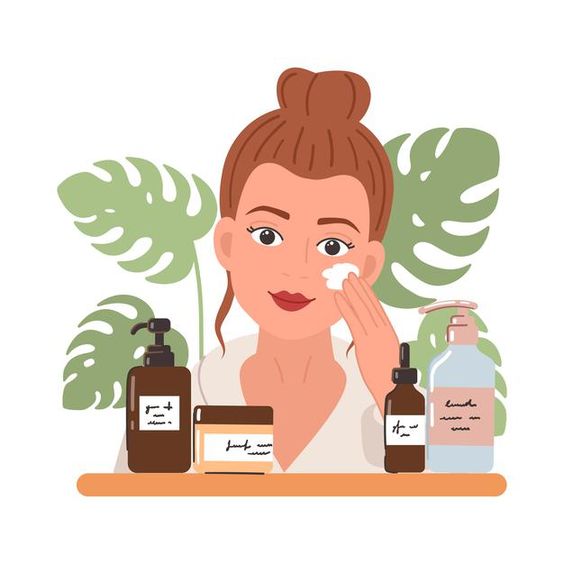Introduction:Beauty problems after pregancy
Beauty problems after pregnancy, many women experience various changes in their bodies, some of which can be referred to as "beauty complications." These changes, although entirely normal and often temporary, can affect a woman's self-esteem and body image. It's important to remember that every woman's experience is unique, and the impact of these changes can vary. we'll explore some common post-pregnancy beauty complications and provide simple explanations and advice for addressing them.
One of the most common beauty complications after pregnancy is stretch marks. These are narrow streaks or lines that can appear on the skin due to the rapid stretching of the skin during pregnancy. Stretch marks often show up on the abdomen, breasts, hips, and thighs. They can be red or purple initially but tend to fade over time, becoming lighter in color. While there's no surefire way to prevent stretch marks, keeping the skin moisturized with lotions and creams can help. Additionally, time usually lessens their appearance, and they often become less noticeable.
Another concern for many new mothers is postpartum hair loss. During pregnancy, many women experience thicker, fuller hair due to hormonal changes. However, after giving birth, some women notice that they begin to shed more hair than usual. This is a natural process, and it's typically a temporary condition. It occurs because during pregnancy, the hair's growth cycle is extended, but after giving birth, it returns to its usual cycle, resulting in more hair shedding. To manage postpartum hair loss, gentle hair care and a balanced diet can be beneficial.
Pigmentation
Pigmentation changes can also be a beauty complication after pregnancy. Some women develop what is known as the "mask of pregnancy" or melasma, which involves the appearance of dark patches on the face, particularly the cheeks, forehead, and upper lip. These patches are typically caused by an increase in hormones during pregnancy and sun exposure. Wearing sunscreen daily and avoiding excessive sun exposure can help prevent or reduce melasma. In most cases, these pigmentation changes gradually fade over time.
Weight gain
Weight gain is a natural part of pregnancy, but many women may struggle with losing the extra pounds after giving birth. This weight can often concentrate around the abdomen, hips, and thighs. The key to managing post-pregnancy weight gain is a balanced diet and regular exercise. Remember that it's essential to approach post-pregnancy weight loss with patience and not rush it. It took nine months to gain the weight, so it's reasonable to expect that it might take some time to lose it.
Breast changes
Breast changes are also a common beauty complication after pregnancy. During pregnancy, the breasts go through a series of transformations in preparation for breastfeeding. After pregnancy, they may appear larger, more tender, and veiny. As a new mother transitions to breastfeeding or formula feeding, the size and shape of the breasts can change. Wearing supportive bras can provide comfort and help with any discomfort during this transition.
Post-pregnancy
Post-pregnancy, some women may notice changes in the texture and appearance of their skin. Hormonal fluctuations can lead to acne breakouts or changes in skin texture. If you're experiencing skin concerns, it's important to use gentle skincare products and consult a dermatologist if necessary. Maintaining a consistent skincare routine can help improve your skin's condition over time.
A common post-pregnancy concern is that of persistent belly bulge. Many women notice that their abdomen may not immediately return to its pre-pregnancy shape after giving birth. This is due to stretched abdominal muscles and may take time to resolve. Engaging in targeted core-strengthening exercises can help regain muscle tone, but it's essential to exercise safely, especially after a C-section. Additionally, wearing postpartum support garments can offer support and comfort during the healing process.
Nail Health
Changes in nail health can also be a post-pregnancy issue. Hormonal fluctuations can lead to brittle or discolored nails. To promote healthy nails, it's a good idea to maintain a balanced diet, drink plenty of water, and use nail-strengthening products if necessary.
Hair texture
Hair texture changes are another beauty complication. Some women notice that their hair texture becomes different from what it was before pregnancy. Hormones are responsible for these changes. If you experience changes in hair texture, it's important to adjust your hair care routine and use products that suit your hair's new needs.
The key to addressing beauty complications after pregnancy is to maintain a sense of patience and self-compassion. These changes are often part of the natural postpartum experience, and they tend to improve with time. It's essential to focus on self-care and prioritize your well-being as you adapt to your new role as a mother. Additionally, seeking support from healthcare professionals and sharing your experiences with other mothers can provide valuable guidance and reassurance during this transformative period of life.












.jpg)

.jpg)


0 Comments